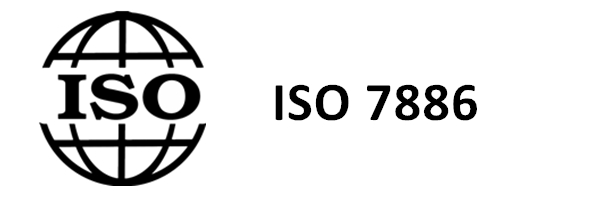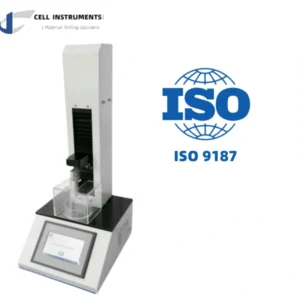ISO 7886-1

ISO 7886-1 Part 1: Syringes for manual use
ISO 7886-1 is an international standard that provides guidelines for the design, performance, and test methods for sterile hypodermic syringes intended for single use. These syringes, whether with or without needles and made of plastic or other materials, are designed for the aspiration and injection of fluids after being filled by the user.
A crucial aspect of the ISO 7886-1 standard is that it sets out the requirements for syringes intended for manual use, thereby ensuring the safety and efficiency of medical procedures worldwide. By adhering to this standard, manufacturers can guarantee that their syringes meet the highest levels of quality and safety, thereby reducing the risk of injury to patients and healthcare professionals alike.
The ISO 7886-1 standard provides a variety of test methods to verify the performance of syringes. These tests cover a broad range of aspects, from needle sharpness and ease of use to the marking’s legibility and the syringe’s overall sterility.
Syringe leak test ensures that the syringe does not leak liquid, ensuring the delivery of accurate doses every time. Another important test is the plunger sliding force test, which measures the force needed to slide the plunger within the syringe, ensuring that the plunger operates smoothly and does not cause any discomfort or difficulty for the user.
The needle penetration and needle pull-out tests are also essential. They ensure that the needle is sharp enough for easy penetration but secure enough not to detach from the syringe during use.
The ISO 7886-1 standard also includes a marking test to ensure that all labels and markings are clear, accurate, and durable. This ensures that healthcare professionals can easily read and understand the syringe’s markings, reducing the risk of errors during use.
In conclusion, the ISO 7886-1 standard plays a crucial role in ensuring the quality and safety of single-use hypodermic syringes. By specifying a range of stringent tests, the standard provides manufacturers with a clear guide to producing high-quality, reliable, and safe syringes for manual use. It also gives healthcare professionals and patients alike the confidence that the syringes they are using meet the highest international standards. As a result, adherence to ISO 7886-1 is not only a matter of regulatory compliance but also a commitment to patient safety and care quality.
ISO 7886-1 Annexes and Measurements
The latest version of the standards is ISO 7886-1:2017, in which annexes A to F outlines procedures to assess the quality and performance of hypodermic syringes. Some of the tests can be set up by professionals in a simple way and requires no special equipment. For example, ISO 7886-1 Annex A is the Test Method for preparation of extracts. The Test only needs apparatus and reagents of distilled water and reagents.
Annex D focuses on evaluating the integrity of the plunger stopper seal by subjecting the syringe to perpendicular and compressive forces, ensuring no leakage occurs during testing. While less common, Annex D provides essential insights into the reliability of the syringe’s seal.
On the other hand, Annex E is a more frequently utilized testing protocol, assessing the forces required to operate the syringe plunger when filled with water. This test measures the break loose force, representing the initial peak force, as well as the glide force, which denotes the average force needed for the remaining plunger travel. Additionally, Annex E mandates the recording of the maximum force during plunger movement, excluding the break loose force. These meticulous assessments guarantee the functionality and safety of hypodermic syringes in medical settings.
ISO 7886-1 Annex A: Method for preparation of extracts
Test Principle: The syringe is filled with water in order to extract soluble components.
Apparatus and reagents
- Distilled water.
- Selection of laboratory borosilicate glassware.
Procedure
- Fill at least three syringes to the nominal capacity graduation line with water .
- Expel air bubbles and maintain the syringes at a temperature of 37 °C to 40 °C for 8 h to 8 h and 15 min.
- Eject the contents and combine them in a vessel made of borosilicate glass.
- Prepare the control fluid by reserving a portion of the unused water.
ISO 7886-1 Annex B: Test method for air leakage past syringe plunger stopper during aspiration, and for separation of plunger stopper and plunger
Test Principle: The syringe nozzle is connected to a compatible connection and the syringe partially filled with water. A negative pressure is applied through the nozzle, and the syringe inspected for leakage past the plunger stopper and seal(s) and to determine if the plunger stopper becomes detached from the plunger.
Apparatus and reagents
- Distilled water.
- Cell Instruments MST-01 Medical Syringe Tester or LT-02 Leak Tester
Procedure
- Draw into the syringe a volume of water of not less than 25 % of the nominal capacity.
- Withdraw the plunger stopper axially until the fiducial line is at the nominal graduated capacity and clamp (B.2.2) the plunger in the tester jig. Connect the syringe nozzle to the conical fitting
- Start the TEST button of MST-01 Medical Syringe Tester or LT-02 Leak Tester to generate the present 88KPa vacuum. The tester will hold the vacuum stable for 60 seconds.
- Examine the syringe for leakage of air past the plunger stopper or seal(s).
- Examine the syringe to determine if the plunger stopper is detached from the plunger.
Syringe Air Leakage Test Apparatus in ISO 7886-1

Syringe Air Leakage Test System by Cell Instruments

ISO 7886-1 Annex C: Method for determination of dead space
Test Principle: The syringe is weighed dry and after having been filled with, and emptied of, water. The dead space is inferred from the mass of the residual water.
Apparatus and reagents
- Balance with a resolution of 1 mg or better.
- Distilled water at a temperature of 18 °C to 28 °C.
Procedure
- Weigh the empty syringe.
- Fill the syringe to the nominal capacity graduation line with distilled water, taking care to
expel all air bubbles and to ensure that the level of the meniscus of the water coincides with the end of the nozzle lumen. - Expel the water by fully depressing the plunger, and wipe dry the outer surfaces of the syringe.
- Reweight the syringe.
ISO 7886-1 Annex D: Test method for liquid leakage at syringe plunger stopper under compression
Test Principle: The syringe is filled with water, the syringe nozzle sealed, the plunger rotated to allow the greatest downward deflection in relation to the barrel and a force applied in an attempt to induce leakage past the plunger stopper seal(s).
Apparatus and reagents
- Distilled water.
- Cell Instruments MST-01 Medical Syringe Tester

Procedure
- Draw into the syringe a volume of water (D.2.4) exceeding the nominal capacity of the syringe.
- Expel air and adjust the volume of water in the syringe to the nominal capacity.
- Seal (D.2.1) the syringe nozzle.
- Using MST-01 Medical Syringe Tester to apply a sideways force to the push-button at right angles to the plunger to swing the plunger radially about the piston seal(s) with a force as given in below table. Orientate the plunger to permit.


- Apply an axial force to the syringe so that the pressure given in Table 1 is generated by the relative action of the piston and barrel. Maintain the pressure for 30 s to 35 s.
- Examine the syringe for leakage of water past the plunger stopper seal(s).
- the maximum deflection from the axial position.
D.3.5 Apply an axial force (D.2.3) to the syringe so that the pressure given in Table 1 is generated by the
relative action of the piston and barrel. Maintain the pressure for 30 s to 35 s.
D.3.6 Examine the syringe for leakage of water past the plunger stopper seal(s). - Draw into the syringe a volume of water of not less than 25 % of the nominal capacity.
- Withdraw the plunger stopper axially until the fiducial line is at the nominal graduated capacity and clamp (B.2.2) the plunger in the tester jig. Connect the syringe nozzle to the conical fitting
- Start the TEST button of MST-01 Medical Syringe Tester or LT-02 Leak Tester to generate the present 88KPa vacuum. The tester will hold the vacuum stable for 60 seconds.
- Examine the syringe for leakage of air past the plunger stopper or seal(s).
- Examine the syringe to determine if the plunger stopper is detached from the plunger.
ISO 7886-1 Annex E: Test method for the determination of forces required to operate the piston
Test Principle: A mechanical testing machine is used to expel water from a syringe and simultaneously record the force required to move the piston.
Apparatus and reagents
- Cell Instruments MST-01 Medical Syringe Tester
- Reservoir, open to the atmosphere.
- Tubing for connecting it to the sample syringe via a female Luer to barbed adapter, and to the outlet needle via a male Luer to barbed adapter.

Procedure
- Remove the syringe from the package. Move the syringe plunger once until the fiducial line
reaches the total graduated capacity graduation line, and then return it so that the fiducial line reaches the zero graduation line. - Add to the reservoir water at (23 ± 5) °C and displace any air from the tubing. Maintain
the water and the syringe at this temperature. - Connect the nozzle of the syringe to the tubing of the reservoir . Fill the syringe with water
to beyond the nominal capacity, mount the syringe in the test fixture of MST-01 Syringe Tester and attach the syringe push button to the driving head of MST-01 Medical Syringe Tester. - Adjust the relative positions of the syringe and reservoir so that the water level in the reservoir is approximately level with the mid-point of the syringe barrel.
- Expel water until the fiducial line of the plunger is at the nominal capacity mark of the syringe.
- Wait 30 s.
- Start the MST-01 Medical Syringe Testerat a rate of (100 ± 5) mm/min and stop at no more than 10 % of the nominal volume.
- The tester measures and records the forces required to initiate movement of the piston and sustain the travel of the piston.
